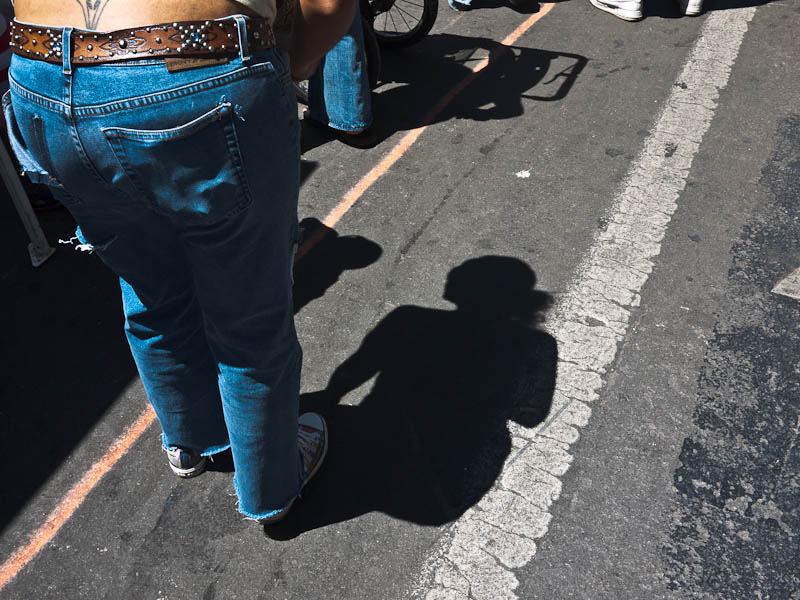
Aboriginal Sidewalk
 Is the Panasonic GF1 perfect? Far from it. Would I give it up? Not a chance; if you want to take it from me you’ll have to pry it out of my cold, dead, hands. I hoped for a digital replacement for my idled Leica M6 and I have not been disappointed.
Is the Panasonic GF1 perfect? Far from it. Would I give it up? Not a chance; if you want to take it from me you’ll have to pry it out of my cold, dead, hands. I hoped for a digital replacement for my idled Leica M6 and I have not been disappointed.
There are certainly things I want to change about the GF1 but add them all up and it has still been the most immediately fruitful camera that I have purchased in 30 years. Prior to starting on this article, it had been in use 10 days out of the 11 since I bought it, delivering at least one keeper on every occasion. It is small enough to have in my backpack and take to work every day. It’s strap has been over my shoulder on my lunch time walks around the office neighborhood. It was discrete and non-threatening when walking and photographing amongst the crowd’s of last Sunday afternoon’s downtown art festival. And my daughter used it to shoot HD video for her high school Spanish project; something the M6 could never have matched.
Why the 20mm Lens?
I chose the 20mm F1.7 pancake lens kit option; together with the optional electronic viewfinder (EVF) attachment and an 8GB SD card this totaled about $1,200 including city and state sales tax. I went with the 20mm lens rather than the alternative 14-45mm kit zoom precisely because I am not trying to duplicate my Nikon SLR outfit in miniature. I want the limitation of the fixed lens to force me into a different process. I want the smaller, less obtrusive, profile of the pancake lens. I want the extra light gathering power of the F1.7 to be able to shoot in low light without the noise of a high ISO setting.
Why not the Olympus E-P2
Of course I considered the Olympus E-P2, it has the advantages of in body image stabilization and a superior quality EVF; I handled both models in the camera store (Precision Camera). But the better EVF comes at the cost of a larger, awkward, bump on the top of the camera that erases much of the discretion that the otherwise compact form fact factor offers. The Olympus F2.8 17mm pancake does not match the quality or aperture of the Panasonic F1.7 20mm and the image stabilization is not as relevant for these non-telephoto focal lengths.
In truth, I was predisposed towards the Panasonic before I had touched either camera; I prefer its squarer looks and larger dials. More significantly, I had a disappointing experience with an Olympus OM-4 back in the 80’s, and again with the early break down of an Olympus point and shoot in the ‘90s. It may not be rational or fair but it is human nature: once bitten, twice shy. Twice bitten and, well, you are going to have to have a very compelling product to win this customer back.
Documentation
 I am an engineer by training and profession and therefore expect to be able to pick up and use most technology by intuition and guesswork. So it was with the GF1 but despite my impatience to get on and use the machine I knew I would have to read the manual in order to glean the more detailed knowledge that would allow me to get the very best from it.
I am an engineer by training and profession and therefore expect to be able to pick up and use most technology by intuition and guesswork. So it was with the GF1 but despite my impatience to get on and use the machine I knew I would have to read the manual in order to glean the more detailed knowledge that would allow me to get the very best from it.
I have not had to digest a camera manual in a long time so I am not well qualified to provide a comparative review of Panasonic’s offering; I have been a Nikon user for over twenty years and I am so used to their layout and features that I barely have to dip into the manual for a new model. That said, the GF1 manual is study in boredom and poor organization. All of the information is in there somewhere but you will find yourself flipping backward and forward trying to put the whole story together for most anything beyond the trivial that you want to do. Thankfully the booklet does have a decent index and that helps but I can’t help the feeling that there still might be some very useful facts tucked away in a dark corner that I have missed
Customizing the Configuration
So what did I change from the default as soon as I knew how? Here’s the list, in top down order as they appear in the menu system:
Rec Menu – page 1 – QUALITY: Set to RAW capture only. The default is fine JPEG so most serious users will want switch to RAW. You can select RAW + JPEG once you figure out what the strange icons used to represent this signify but my mode of working doesn’t have any use for the JPEG; RAW only for me.
Rec Menu – page 3 – ISO INCREMENTS: Set to 1/3 EV. In low light situations this allows me finer control when compromising between noise and “film” speed; I can choose 500 or 640 rather than jumping from 400 straight up to 800. Light permitting, I ISO 200 is my default though.
Setup Menu – page 1 – Fn BUTTON SET: Configured the custom function button to turn on viewfinder guide lines. The circle of cursor buttons to the right of the LCD panel do double duty as menu navigation and as individual, fast access, function buttons for ISO, focus mode and white balance menu. The bottom one is left open for you to configure as you wish. Well, not quite as you wish since the set of functions you can choose form is rather limited but it is true that there are dedicated buttons ofr most of the things you might wish for.
Setup Menu – page 2 – AUTO REVIEW Review: Turned off the after shot image review. Having your viewfinder freeze for several seconds each time you take a picture is disconcerting; sometimes you don’t realize what is happening, sometimes the frozen movement is a give away. You can clear the review with a light press of the shutter button but you work faster and get less dizzy with it permanently off.
Setup Menu – page 3 – AUTO REVIEW Review: Turn off the “in focus” beep. I don’t want the black thing in my hands beeping at my subject and attracting their attention. And I don’t want to be nagged like an ADD child either.
Custom Menu – page 5 – LVF DISP STYLE: Maximize the frame display in the viewfinder. Perversely, the default for the low resolution finder is a “viewfinder style” that is supposed to emulate to appearance of a classic SLR viewfinder with data shown in a black strip underneath the image. This viewfinder mode sacrifices 10% or more of the limited pixels so I switched to the “LCD monitor style” – much better.
Viewfinder and Focus
I use the viewfinder virtually all the time. Perhaps I am just old fashioned? No, I am sure I can’t hold the camera out in front of me and keep it as steady as when it is up against my face. And then there is my aging eyes to consider. The EVF finder has a quick and easy diopter adjustment and fully compensates for my increasingly fuzzy close up vision. My arms are getting to be too short for me to use the main screen for composition and instrument reading; even at arm’s length I can’t manage without reading glasses and I do not want to be flipping them up and down of my nose while I am working.
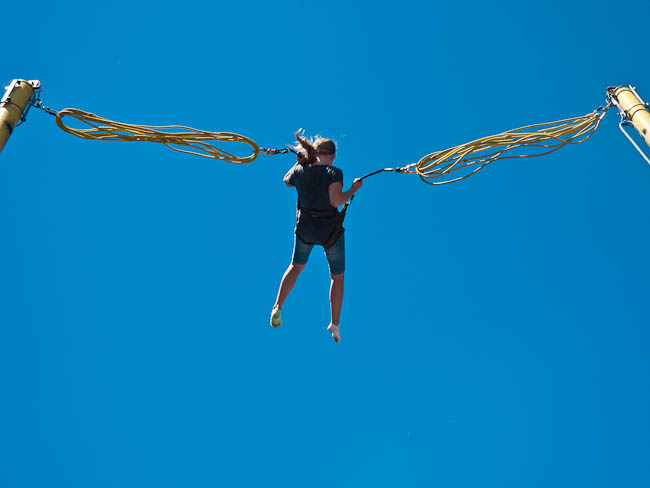 The EVF was the one point on which I was nervous making my purchase decision. I have never used an electronic viewfinder before; I was skeptical and nervous that I would regret my choice. The lower quality of the EVF in comparison with that of the Olympus E-P2 has been much discussed on other sites but in practice it does the job for framing the picture and telling what the camera is doing. Writing now, two weeks after walking out of the store, I have no regrets; the EVF does all that I need it to do.
The EVF was the one point on which I was nervous making my purchase decision. I have never used an electronic viewfinder before; I was skeptical and nervous that I would regret my choice. The lower quality of the EVF in comparison with that of the Olympus E-P2 has been much discussed on other sites but in practice it does the job for framing the picture and telling what the camera is doing. Writing now, two weeks after walking out of the store, I have no regrets; the EVF does all that I need it to do.
Flicking between the rear screen and the viewfinder is accomplished by a well placed button on the right side of the finder. The ability to tilt the finder is occasionally useful for disguising what you are up to – people have not looked down into a camera since twin lens reflex machines were relatively common in the 1960s, it is not a posture that is immediately associated one’s with being the subject of a photograph.
Manual focus works surprisingly well though it is not exactly “manual” in the traditional sense but “focus by wire”; you are not operating the mechanics of the lens but instructing the camera to drive the lens motor. Nevertheless, manual focusing has a smooth feel to it. Switching to manual is accomplished via a dedicated button just below the AE/AF lock button and, with a little practice, can be engaged without removing your eye from the viewfinder. Once in manual focus mode, any slight twist of the lens collar zooms the viewfinder to the central portion of the frame; something like a nine times magnification. Touch the shutter button or wait a few seconds and the scale reverts to normal.
The viewfinder’s lack of fine detail makes it a poor choice for macro photography focusing where depth of field is shallow but it usable for on more distant subjects. At best though, manual focusing with the viewfinder is a matter of judging the center between getting more blurred one way and the other The rear LCD panel would always be the best choice for critical manual focusing.
I am still looking for a way to configure the GF1 the way I have used Nikon SLRs for 11 years or more: a hybrid of manual and auto focus where the shutter button has no effect on the focus but instead a separate button, easily accessed with the thumb, is used to trigger auto focus when it is needed. The AE/AF lock button is in the right place and that is how I my Nikon D300, D100 and F100 SLRs have been all been set up. I haven’t given up on this idea yet for the GF1 yet; if I just work on understanding the various combinations of auto focus settings I may yet find that I can do this.
The multi-point auto focus works very well most of the time but occasionally makes some odd choices for key points in the frame, not odd to its algorithms but not what you would choose. Given the limitations of manual focus with the viewfinder, auto focus is all the more important. Happily, the camera outlines the focus points with green boxes so you have a clear indication of what it is doing; if you don’t agree it is a simple matter to swing the camera way, have it pick up the focus point you do want, lock and swing back.
Metering, Override and Compensation
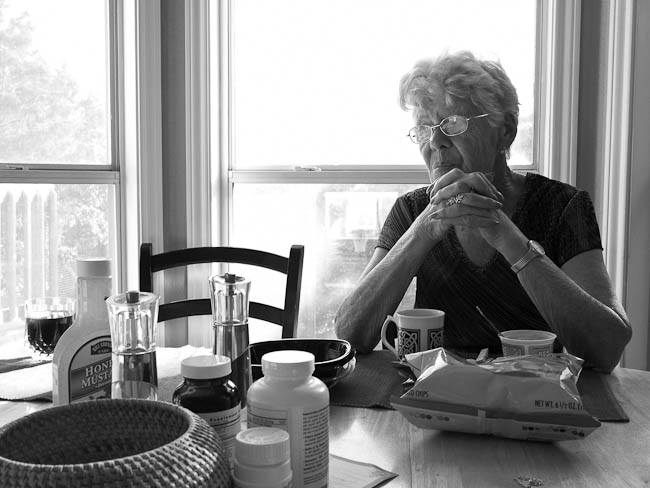 If there was just one thing that I could ask Panasonic to fix on the the GF1 it would be the Program exposure mode. Over the last twenty years I have come to use program mode 99% of the time, trusting it to choose pretty much the same compromise of aperture and shutter speed that I would; using the shift function to adjust depth of field up or down a little for the specific context. The GF1’s program algorithm is strange to say the least; “wide as possible” might describe it. F3.5 and 1/3000s is nothing like the choice I would make under any circumstance other than perhaps romantic head shots.
If there was just one thing that I could ask Panasonic to fix on the the GF1 it would be the Program exposure mode. Over the last twenty years I have come to use program mode 99% of the time, trusting it to choose pretty much the same compromise of aperture and shutter speed that I would; using the shift function to adjust depth of field up or down a little for the specific context. The GF1’s program algorithm is strange to say the least; “wide as possible” might describe it. F3.5 and 1/3000s is nothing like the choice I would make under any circumstance other than perhaps romantic head shots.
[5/9/2010 Clarification – with the D300 I always have the camera set to under expose by 1/3 stop to avoid highlight blowouts and give richer color; when bright spots in the frame would likely burn out I will center them in the finder, lock the exposure and then recompose. Ultimately this technique is not a lot different from the manual exposure approach described by Dave Wilson in his Real Photographers Shoot in Manual Mode (or not) blog posting.]
My standard operating procedure with the GF1 has become turn camera on and immediately shift program to a more middle of the road balance between depth and speed. The shift is reset when you power off so I tend to leave the camera switched on for extended periods to avoid the risk of forgetting to adjust the shift next time. Unfortunately, this means I can’t just turn the camera on for an opportunity shot and trust it to set the depth of field to a reasonable value; the camera has to be already on and shifted.
Using aperture priority is obviously an alternative option but that burned me at last week’s street fair where had set F10/F11 for the sunlit main street and got motion blurred shots when I moved to the lower light of the more shaded side streets. My fault, my lack of craft. I have learned from the experience but really, Panasonic, what were you thinking when you wrote that program?
The thumbwheel on the back of the camera, behind the shutter release, does double duty as both button and adjustment wheel. Clicking it as a button switches between exposure compensation and shift / aperture / speed adjustment. That’s a brilliant piece of design! I love it and sorely wish my D300 did the same; with the Nikon I have to take my eye away form the finder to find the compensation button.
The thumbwheel is not quite perfect though; it really needs to project more from the body. The wheel is recessed a little too deeply into its thumb grip mounting so that the thumb tends to slide over it rather than engage with the gnarling.
Speaking of grips; the ridge on the slight ridge on front of the camera meant as nod towards being a finger grip is slippery and inadequate; it might as well not be there. I’d like to have something more substantial for the fingers to engage with, and a rubber coating or strip.
Image Stabilization and Orientation
The kit I purchased with the 20mm lens does not have any stabilization. Panasonic has taken the path of building stabilization into some lenses, designated by the OIS monica, rather than in the camera. While this is a slight disappointment for me I am still fit enough to hand hold a standard lens under most circumstances and I always have the option to purchase an Olympus body in the future as my MS worsens. Either that or I could add the 14-45mm zoom which is an OIS lens.
While some find Panasonic decision not to locate the stabilization mechanics in the body strange it probably allows the company to provide better vibration reduction on longer focal length lens. There is a limit to how much the sensor can be moved to compensate for the larger effective frame movements of a telephoto lens.
Sadly, the camera is only able to detect image orientation when fitted with an OIS lens. With the 200mm lens the EXIF data recorded with each shot remains mute about whether the photograph is horizontal or vertical. That’s no big deal to fix with a couple of clicks in Lightroom or Aperture but a little surprising in a modern camera of this price; heck, even my phone knows where vertical is and even untethered it doesn’t cost half what this camera does.
Battery Life
The manual and sales literature quotes battery life in terms of the number of shots that can be taken but that’s almost irrelevant for me. I want to know how long I can leave it switched on with the LCD monitor dark. I want to have the camera on and configured for immediate use as I walk around town and not have to worry if it will be dead when the decisive moment arrives.
So here;s the good news. I charge the battery on Friday night ready for my daughter to use for he school project video shoot the next day. She and her friends shot some 20 minutes of HD video over a three hour period, not worrying about the battery in between I am sure. I spent two hours or so or so wandering around the street fair on Sunday with the camera on for extended periods. And I have used the camera most days this week with it left on for 10 to 20 minutes each time. Today it still shows two bars out of three on the battery indicator; I imagine it will drop to one bar at any time now but it seems that I could use the camera heavily for a whole day without needing a backup battery. That’s good enough for me.
Video
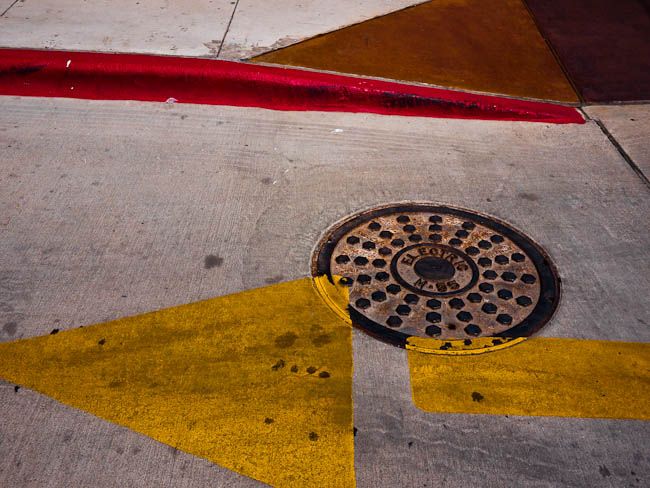 I did not buy the camera so that I could shoot video; I am a stills photographer and not an enthusiast of family movies. Nevertheless, modern high school curriculums of any and all subjects seem to think that video projects are an integral part of a good education in the 21st century and I knew that the GF1 would come in handy for this when I brought it home. Why it should be necessary for a ninth grade student to have access to video equipment and editing tools in order to learn Spanish is beyond me but that’s how it seems to be. Last semester, one daughter had 5 points taken off for “poor video quality” – it was shot with my iPhone and edited with the 10 year old freebie software that came bundled with Windows XP. Why would high school projects be judged on video quality if they are not for a media or journalism class?
I did not buy the camera so that I could shoot video; I am a stills photographer and not an enthusiast of family movies. Nevertheless, modern high school curriculums of any and all subjects seem to think that video projects are an integral part of a good education in the 21st century and I knew that the GF1 would come in handy for this when I brought it home. Why it should be necessary for a ninth grade student to have access to video equipment and editing tools in order to learn Spanish is beyond me but that’s how it seems to be. Last semester, one daughter had 5 points taken off for “poor video quality” – it was shot with my iPhone and edited with the 10 year old freebie software that came bundled with Windows XP. Why would high school projects be judged on video quality if they are not for a media or journalism class?
Anyway, <RANT OFF>, last week my other daughter stood at the leading edge in the middle class education arms race. This time my daughter shot HD video on the GF1. This time we edited on a new and shiny Mac with iMovie, Garage Band, and iDVD software. This time no marks will be taken of for “quality.”
If you really care about video you should be aware that, unlike the Olympus E-P2 or Panasonic’s larger GH1 sibling, the GF1 only has a mono microphone built in and does not allow an external microphone to added. Mono was plenty good enough for my daughters project but if video is more important to you might come down on the side of the E-P2.
Conclusion and Other Opinions
I don’t really need to add a conclusion; I gave it in the first paragraph – you would have to kidnap one of my girls and demand the GF1 in ransom to get it off me. There are things that Panasonic can improve for the certain to ome GF2 and beyond but the GF1 has already allowed me to capture images that I would have had to walk past, camera-less, just a month ago. That’s what I wanted from the camera and that’s what I got.
For the technical details you can read the, always excellant, dpreview.com review or the one at Imaging Resource. Thom Hogan offers his usual pithy and professional opinion in his Panasonic GF1 Review.
For more field experience driven reports you can turn to the Online Photographer (always something new to read every day) and at Luminous Landscape’s Tested & Reccommended.
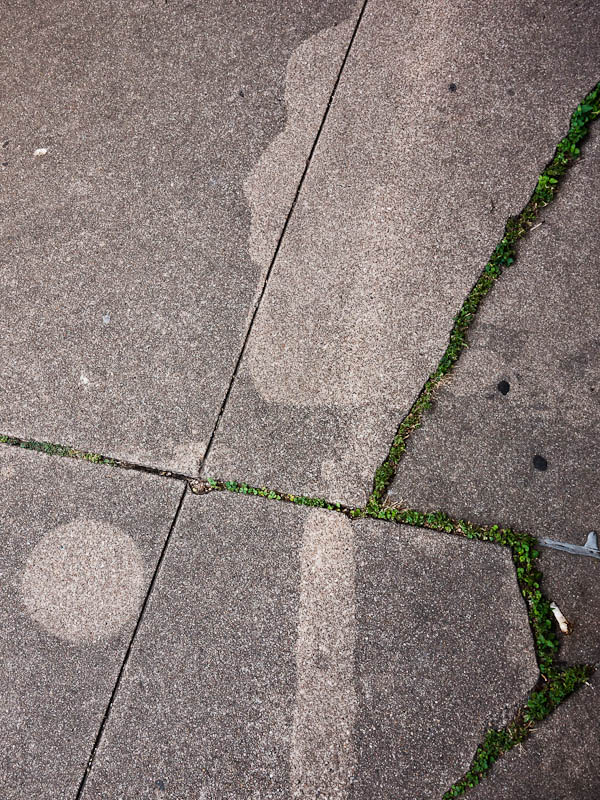
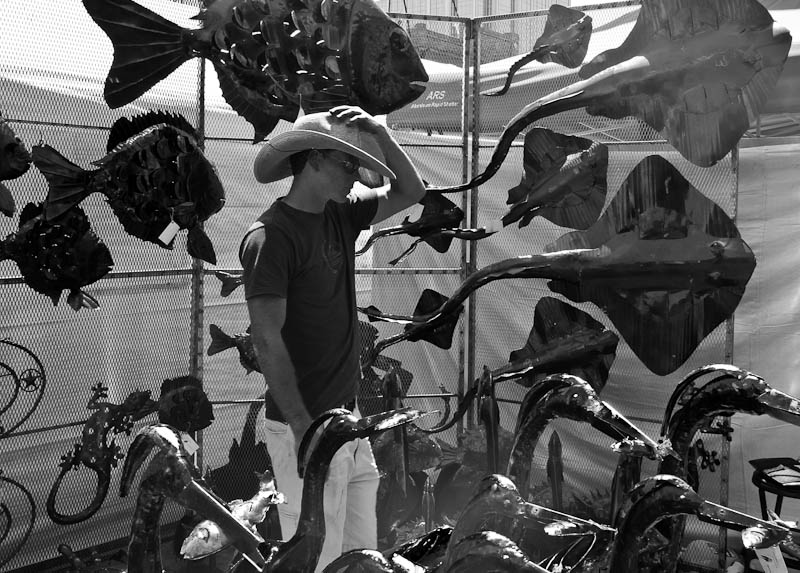

 Is the Panasonic GF1 perfect? Far from it. Would I give it up? Not a chance; if you want to take it from me you’ll have to pry it out of my cold, dead, hands. I hoped for a digital replacement for my idled Leica M6 and I have not been disappointed.
Is the Panasonic GF1 perfect? Far from it. Would I give it up? Not a chance; if you want to take it from me you’ll have to pry it out of my cold, dead, hands. I hoped for a digital replacement for my idled Leica M6 and I have not been disappointed. I am an engineer by training and profession and therefore expect to be able to pick up and use most technology by intuition and guesswork. So it was with the GF1 but despite my impatience to get on and use the machine I knew I would have to read the manual in order to glean the more detailed knowledge that would allow me to get the very best from it.
I am an engineer by training and profession and therefore expect to be able to pick up and use most technology by intuition and guesswork. So it was with the GF1 but despite my impatience to get on and use the machine I knew I would have to read the manual in order to glean the more detailed knowledge that would allow me to get the very best from it. The EVF was the one point on which I was nervous making my purchase decision. I have never used an electronic viewfinder before; I was skeptical and nervous that I would regret my choice. The lower quality of the EVF in comparison with that of the Olympus E-P2 has been much discussed on other sites but in practice it does the job for framing the picture and telling what the camera is doing. Writing now, two weeks after walking out of the store, I have no regrets; the EVF does all that I need it to do.
The EVF was the one point on which I was nervous making my purchase decision. I have never used an electronic viewfinder before; I was skeptical and nervous that I would regret my choice. The lower quality of the EVF in comparison with that of the Olympus E-P2 has been much discussed on other sites but in practice it does the job for framing the picture and telling what the camera is doing. Writing now, two weeks after walking out of the store, I have no regrets; the EVF does all that I need it to do. If there was just one thing that I could ask Panasonic to fix on the the GF1 it would be the Program exposure mode. Over the last twenty years I have come to use program mode 99% of the time, trusting it to choose pretty much the same compromise of aperture and shutter speed that I would; using the shift function to adjust depth of field up or down a little for the specific context. The GF1’s program algorithm is strange to say the least; “wide as possible” might describe it. F3.5 and 1/3000s is nothing like the choice I would make under any circumstance other than perhaps romantic head shots.
If there was just one thing that I could ask Panasonic to fix on the the GF1 it would be the Program exposure mode. Over the last twenty years I have come to use program mode 99% of the time, trusting it to choose pretty much the same compromise of aperture and shutter speed that I would; using the shift function to adjust depth of field up or down a little for the specific context. The GF1’s program algorithm is strange to say the least; “wide as possible” might describe it. F3.5 and 1/3000s is nothing like the choice I would make under any circumstance other than perhaps romantic head shots.  I did not buy the camera so that I could shoot video; I am a stills photographer and not an enthusiast of family movies. Nevertheless, modern high school curriculums of any and all subjects seem to think that video projects are an integral part of a good education in the 21st century and I knew that the GF1 would come in handy for this when I brought it home. Why it should be necessary for a ninth grade student to have access to video equipment and editing tools in order to learn Spanish is beyond me but that’s how it seems to be. Last semester, one daughter had 5 points taken off for “poor video quality” – it was shot with my iPhone and edited with the 10 year old freebie software that came bundled with Windows XP. Why would high school projects be judged on video quality if they are not for a media or journalism class?
I did not buy the camera so that I could shoot video; I am a stills photographer and not an enthusiast of family movies. Nevertheless, modern high school curriculums of any and all subjects seem to think that video projects are an integral part of a good education in the 21st century and I knew that the GF1 would come in handy for this when I brought it home. Why it should be necessary for a ninth grade student to have access to video equipment and editing tools in order to learn Spanish is beyond me but that’s how it seems to be. Last semester, one daughter had 5 points taken off for “poor video quality” – it was shot with my iPhone and edited with the 10 year old freebie software that came bundled with Windows XP. Why would high school projects be judged on video quality if they are not for a media or journalism class?
